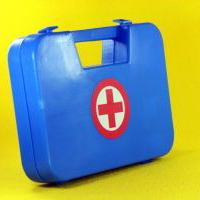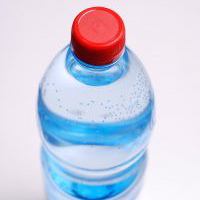 Staying healthy when you travel can be a challenge.
Staying healthy when you travel can be a challenge.
Aside from concerns like maintaining a balanced diet and getting enough exercise, the very act of traveling can present some unique threats to your health.
Since you probably don’t want to arrive at your destination with a severe cold or stomach flu, here are some tips from The Complete Travel Detective Bible (chapter 14 if you’re playing along at home) for getting away by plane while keeping your health intact.
On airplanes, one of the main concerns is the air quality. For starters, oxygen levels are lower on airplanes than on the ground, and although the oxygen concentration on a plane is similar to that found at an altitude of 8,000 feet, most people aren’t used to that altitude in the first place. According to the World Health Organization, new commercial jet aircraft recirculate air, and many older aircraft built before the late 1980s have been retrofitted to do so. About 10 percent to 50 percent of cabin air is filtered, mixed with fresh air and reintroduced into the cabin.
Related articles:
As if all that weren’t enough, the air on an airplane is also extremely dry, with as little as 10 percent of the humidity found on the ground. This leads to dried-out breathing passages, which in turn leads to an increased susceptibility to airborne diseases.
So in short, you end up with a flying tube of partially-recirculated, low-oxygen, low-moisture air, filled with any number of germs, bacteria, diseases and other gases brought on board by other passengers. In addition, the lavatories on airplanes are chock-full of germs, often including major offenders like strep and staph.
Add to that the fact that the blankets on many planes are washed only when they are “visibly” dirty, or only when they “appear” to have been used, and you have a perfect breeding ground for a wide variety of potential illnesses. What can you do to keep these troublesome elements from ruining your trip?
To battle these potential sources of sickness, start by asking the flight attendant whether all of the plane’s air packs are working for the flight. Air packs are where the fresh air on the plane comes from, and while most wide-body aircraft have three air packs available, many airlines choose to save money by operating just two packs at a time. If you ask about the air packs when you board, the crew might make sure that all three of the packs are working for your flight, which can make a big difference.
 Second, control your own hydration by drinking plenty of water and using a saline nasal spray to keep your passages moist.
Second, control your own hydration by drinking plenty of water and using a saline nasal spray to keep your passages moist.
In your search for water, though, stick with bottled water; don’t drink the water on a plane unless you see the flight attendant opening a brand-new bottle before your eyes. Airlines often don’t stock enough bottled water on flights, and flight attendants have been known to refill empty bottles with the water from airplane’s holding tanks (it’s called Tappian!). To make matters worse, in 2004, the EPA tested the water from 327 randomly chosen airplanes, and it found that 13 percent of the planes had water that contained total coliform bacteria; two planes tested positive for E. coli in the water.
Third, don’t use an airline blanket if you have any doubts at all about its cleanliness. (Trust us, those doubts are valid.) Better safe than exposed to something unpleasant.
And most last but certainly not least: Wash your hands thoroughly and often. Whatever germ-infested surfaces you touch will have a much harder time infecting you if you wash your hands immediately afterwards.
For more travel health tips and other suggestions for a safe trip, check out The Complete Travel Detective Bible, in stores now.
Read more about airplane health in The Facts on Infectious Diseases & Air Travel.
Related articles:
By Erica Adams for PeterGreenberg.com.












